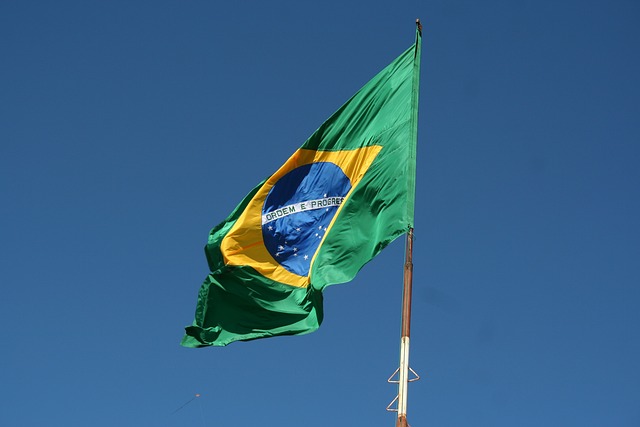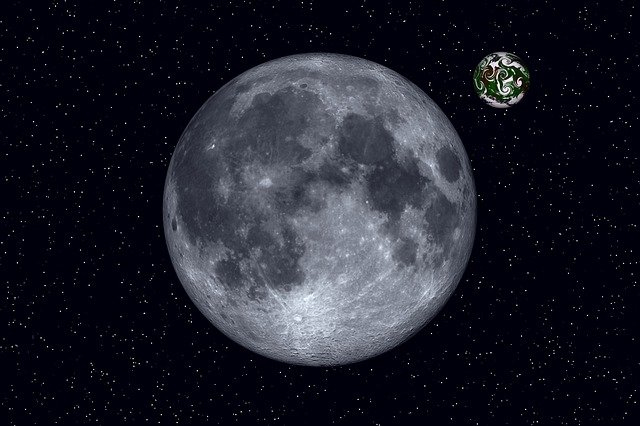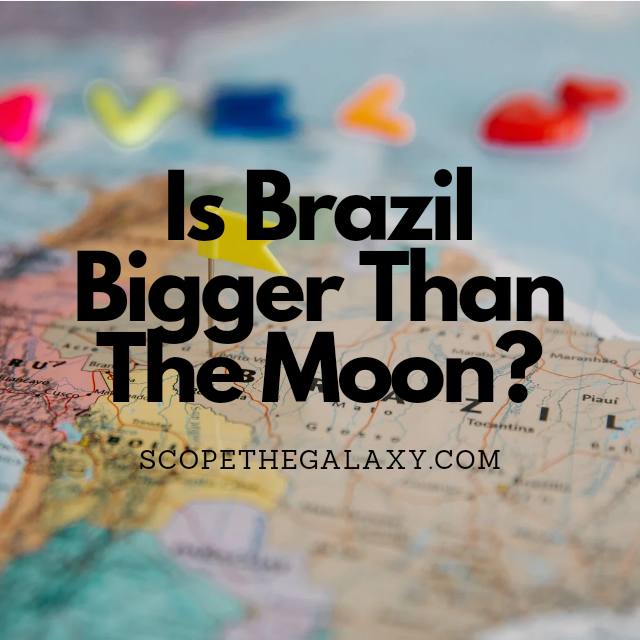*This post may contain affiliate links. This means we may make a commission if you purchase an item using one of our links*
Brazil is the fifth largest country on Earth, whilst the Moon is the 5th largest natural satellite. Still, there’s no comparison regarding which one is bigger as Brazil is a flat land mass with a surface area of 8.5 million square kilometers and a volume of 340 million sq. kilometers while the Moon is a spherical body with a surface area of 37.9 million sq. kilometers and a volume of 21.9 billion cubic kilometers.
For a more detailed look at what makes both bodies as big as they are, continue reading as it will be discussed in the sections below.
How Big Is Brazil?

Brazil, officially known as the Federative Republic of Brazil, is a country situated in South America. However, it makes up around half of the continent’s total landmass. It is the fifth largest country in the world, only beaten by the United States, Russia, Canada, and China.
Brazil stretches for roughly 4,350 kilometers from north to south and around 4,395 kilometers from east to west, giving its circumference a total landmass of around 8.5 million square kilometers. Within this landmass of Brazil, there are approximately 216 million people, which makes it the 6th most populated country in the world.
Brazil is so large that it covers 7,400 kilometers of the Atlantic coastline, sharing over 15,000 kilometers of inland borders with just about every South American country besides Ecuador and Chile. They border Uruguay to their South, Bolivia, Paraguay, and Argentina to their South West.
Peru lies to the West of Brazil, while Venezuela, Suriname, Guyana, and French Guiana lie to its immediate north. The total shape of Brazil forms an enormous irregular triangle that includes a huge amount of the Amazon rainforest, subtropical landscapes, savanna, wetlands, and mountainous regions.
If we are to assume that the average thickness of the land on Brazil is roughly 40km, this would lead to Brazil’s overall cubic volume reaching a relatively high number of 340 million cubic kilometers.
How Big Is The Moon?

The moon has a surface area of 37,936,695 sq. km, which is about 4 times the area of Canada. While this celestial body may appear to be a perfect sphere, it is an oblate spheroid which means that the diameter is slightly less when you measure it pole to pole instead of across the equator.
The moon’s volume, when we look at its entire body, is 21,971,669,064 cubic kilometers. The crust is thicker than the Earth’s crust, which is pretty significant if you’re comparing the size of these two bodies. The moon’s crust is between 60 and 100 kilometers thick.
Even if we take the moon’s crust at its thinnest, the total area tops two billion cubic kilometers, which is still significantly bigger than the volume of the Brazil.
Viewing the moon, you can see the mix of dark lunar plains and bright mountainous highlands. Early observations led scientists to believe that the dark areas could represent water, but we have since discovered that there is no water on this airless surface.
Earth mountains are created through tectonic or volcanic action. In comparison, the moon’s mountainous ranges formed almost exclusively from the impact of crater collisions.
There are three significant mountain ranges on the moon: the Montes Caucasus and Montes Apenninus create a barrier between the Sea of Serenity and the Sea of Showers. And in the northwest, the Plato crater is encased by the Montes Alpes (lunar Alps).
Summary
Brazil may be the biggest south American country on Earth but it isn’t nearly as big as the Moon, which has a surface area that is roughly 4 times bigger than Brazil’s and a volume that is 64 times more than that of Brazil.
This makes sense as Brazil is a mostly flat land mass while the Moon is a spherical body.

